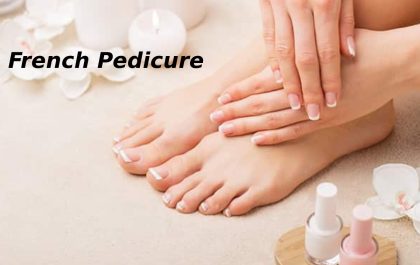Table of Contents
Introduction
Physical Health and Fitness Benefits – Most do not move enough. The high-quality news is that regular physical activity is one of the easiest ways to reduce your danger of chronic disease and improve your worth in life.
- Make physical activity a priority to:
- Improve your memory and brain function.
- Protect against many chronic diseases.
- Aid in weight management.
- Lower blood pressure and improve heart health.
- Improve your quality of sleep.
- Reduce feelings of anxiety and depression.
- Combat cancer-related fatigue.
- Improve joint pain and stiffness.
- Maintain muscle strength and balance.
- Increase life span.
Physical therapists are movement experts who improve life’s value through hands-on care, patient education and set association. Physical therapists treat the public of all ages and abilities and empower them to participate actively in your care. After an evaluation, your physical psychoanalyst will create a treatment plan for your specific needs and goals.
Exercise can Make you Feel Happier of Physical Health and Fitness Benefits

Exercise has shown to improve your mood and decrease feelings of despair, anxiety, and stress.
It changes the mind’s part that controls stress and anxiety. And also, It can also increase brain sensitivity toward the hormones serotonin and norepinephrine, which relieve outlook of depression.
Additionally, doing exercises can increase the production of endorphins, which are recognized to help out produce positive thoughts and decrease the perception of ache.
Interestingly, it doesn’t make substance how intense your workout is. And also, It seems that exercise canister benefit your mood no matter the strength of the physical action.
In fact, in a study of women diagnosed with depression, the exercise of some strength considerably decreased the thoughts of sadness.
The effects of working out on mood are so powerful that choosing to exercise makes a dissimilarity over a short period.
One review of 19 studies established that the active public who stopped exercise experienced significant increases in symptoms of despair and anxiety, even after only a few weeks.
Exercise is Well-Meant for your Muscle and Bones of Physical Health and Fitness Benefits

Exercise is essential in building and maintaining physically powerful muscles and bones.
Activities like weightlifting canisters stimulate muscle building when paired with adequate protein intake.
Working out helps release hormones that promote your muscles’ ability to absorb amino acids. It helps them grow and reduce their breakdown.
As public age, they tend to lose muscle mass and function, leading to an increased risk of injury. Regular physical activity reduces muscle loss and maintains force as you age.
Exercise as well helps build bone density when you’re younger, in addition to helping stop osteoporosis later in life.
Some research suggests that high-impact exercise or odd-impact sportsman helps promote a higher bone density than no-impact sports like swimming and cycling.
Exercise can Decrease the Danger of Chronic Disease

requiring regular physical activity is a primary reason for chronic disease.
Regular exercise improves insulin compassion, heart fitness, and body composition. Its container also decreases blood pressure and cholesterol level.
Exercise can help lessen or prevent the following chronic fitness situation.
Type 2 diabetes. Routine aerobic exercise may delay or prevent type 2 diabetes. It also has substantial health benefits for people with type 1 diabetes. confrontation training for type 2 diabetes includes improvement in fat mass, blood pressure, lean body mass, insulin resistance, and glycemic control.
Heart disease. Exercise reduces cardiovascular danger factors and is also an action for the public with cardiovascular disease.
Many types of cancer. Exercise can help reduce the danger of several cancers, including breast, colorectal, endometrial, gallbladder, kidney, lung, liver, ovarian, pancreatic, prostate, thyroid, gastric, and esophageal cancer.
High cholesterol. Regular moderate-intensity physical activity can increase HDL cholesterol while maintaining or offsetting increases in LDL cholesterol. Research supports the theory that high-intensity aerobic exercise is to lesser LDL point.
Hypertension: Participating in regular aerobic exercise canister lower resting systolic BP by 5–7 mmHg among the public through hypertension.
In contrast, a lack of regular workout even in the short term. And also, it can lead to a significant boost in belly fat, which may increase the risk of type 2 diabetes and heart disease.
That’s why regular physical activity recommend to reduce belly fat and decrease the risk of developing these conditions.
Exercise can Reduce Pain of Physical Health and Fitness Benefits

Although chronic pain can be debilitating, work out container help decrease it.
In fact, for many years, the advice for treating chronic pain was rest and inactivity. However, recent studies show that working out helps relieve chronic pain.
One examination of several studies found that exercise can help those with chronic pain decrease their pain and improve their excellence in living.
Several studies also explain that exercise can help control pain associated with a variety of physical condition conditions, as well as chronic low back pain, fibromyalgia, and chronic soft tissue shoulder disorder, to name a few.
Additionally, physical activity can also raise pain acceptance and decrease pain perception.
Conclusion
Physical Health and Fitness Benefits – Physical activity increases exercise capacity and fitness, which may lead to many health benefits. Individuals who are more physically active appear to have lower rates of all-cause mortality, probably due to a decrease in chronic diseases, including coronary artery disease.
Related posts
Featured Posts
Exercises to Have the Best Six-Pack in Summer
Introduction Marking the abdomen area is the goal of true fitness lovers. And, is that this summer you can teach…
French Pedicure – How to Get French Pedicure Nails?
French Pedicure French Pedicure – Thanks to the latest beauty services, a modern woman can afford a classically monochromatic color…


